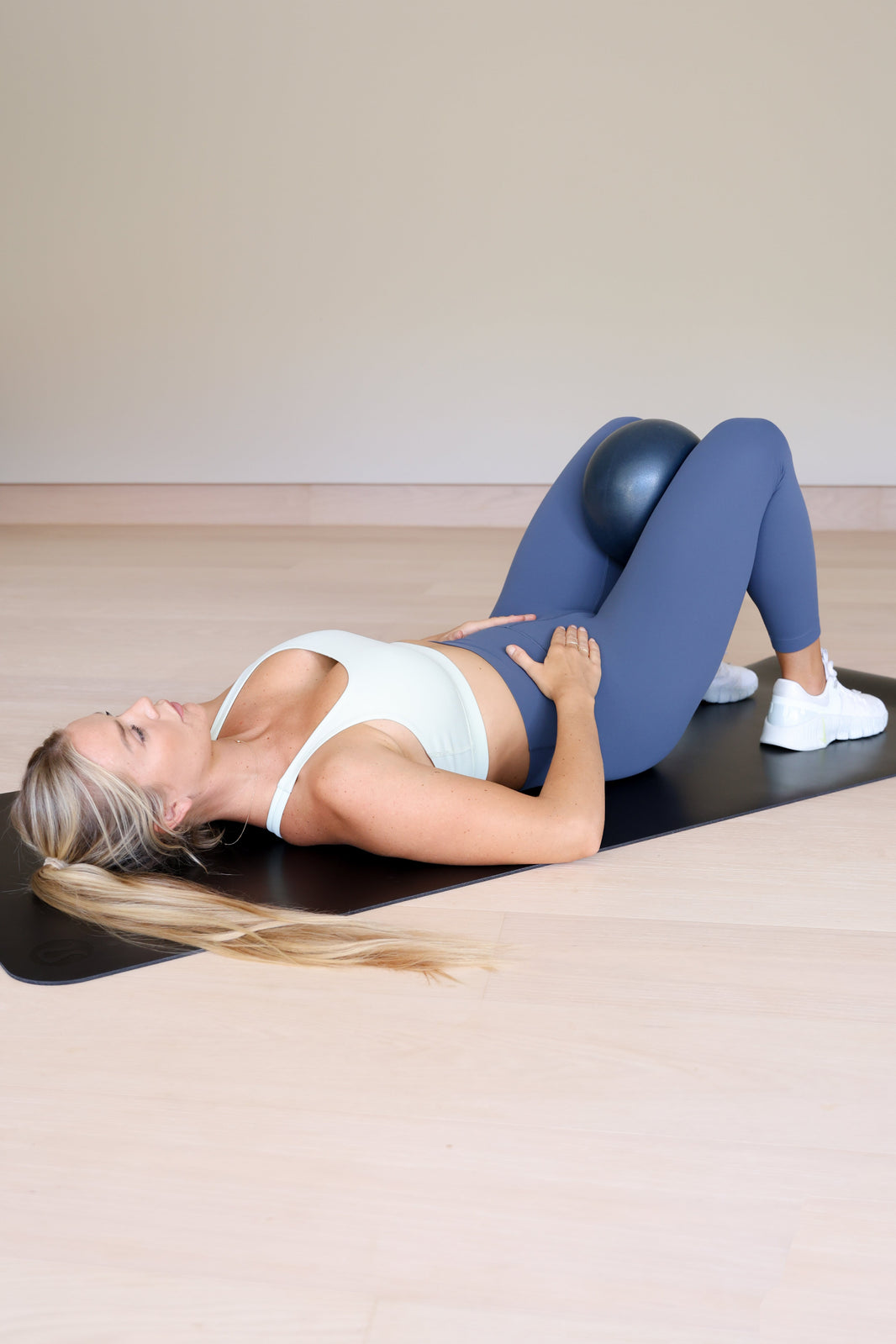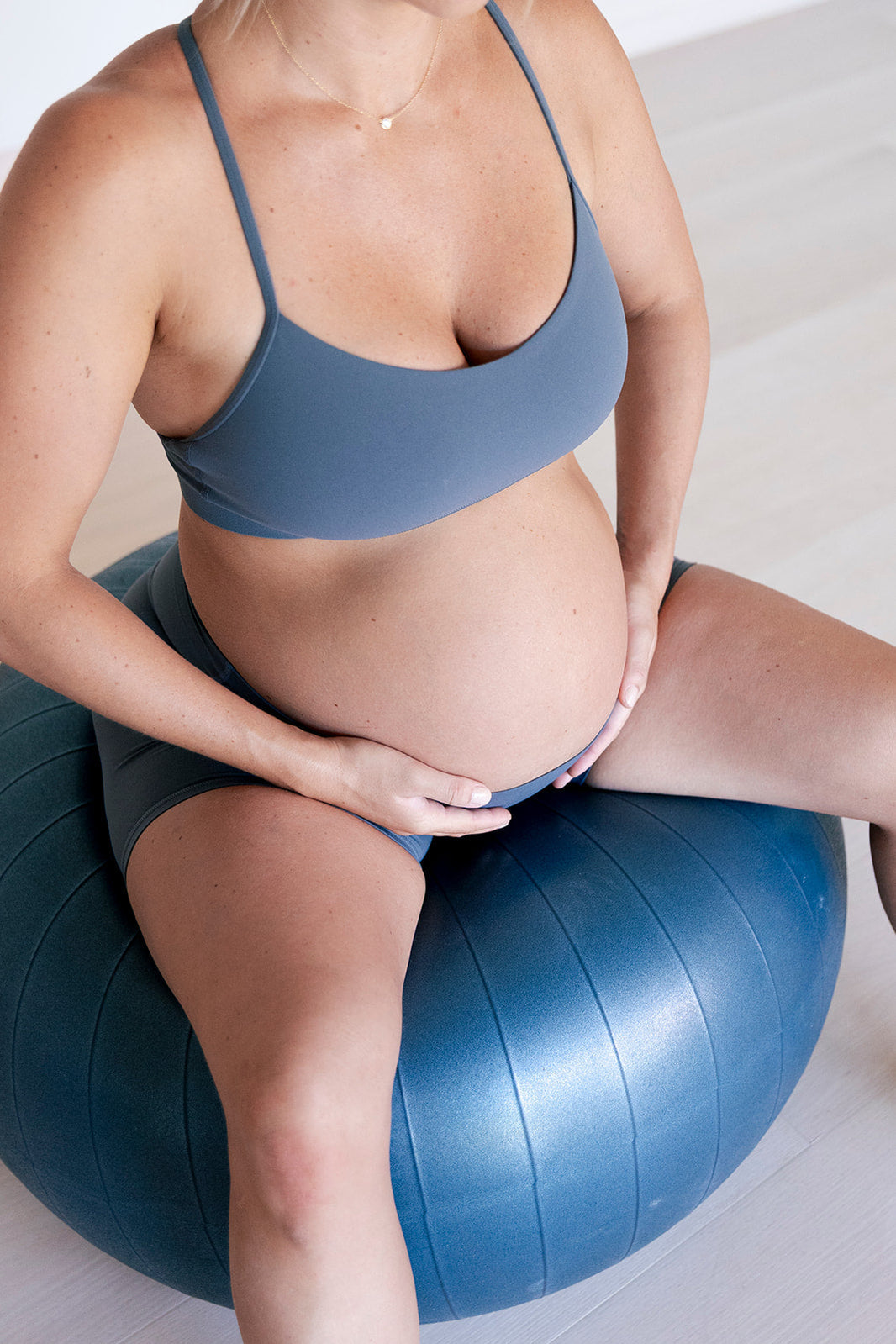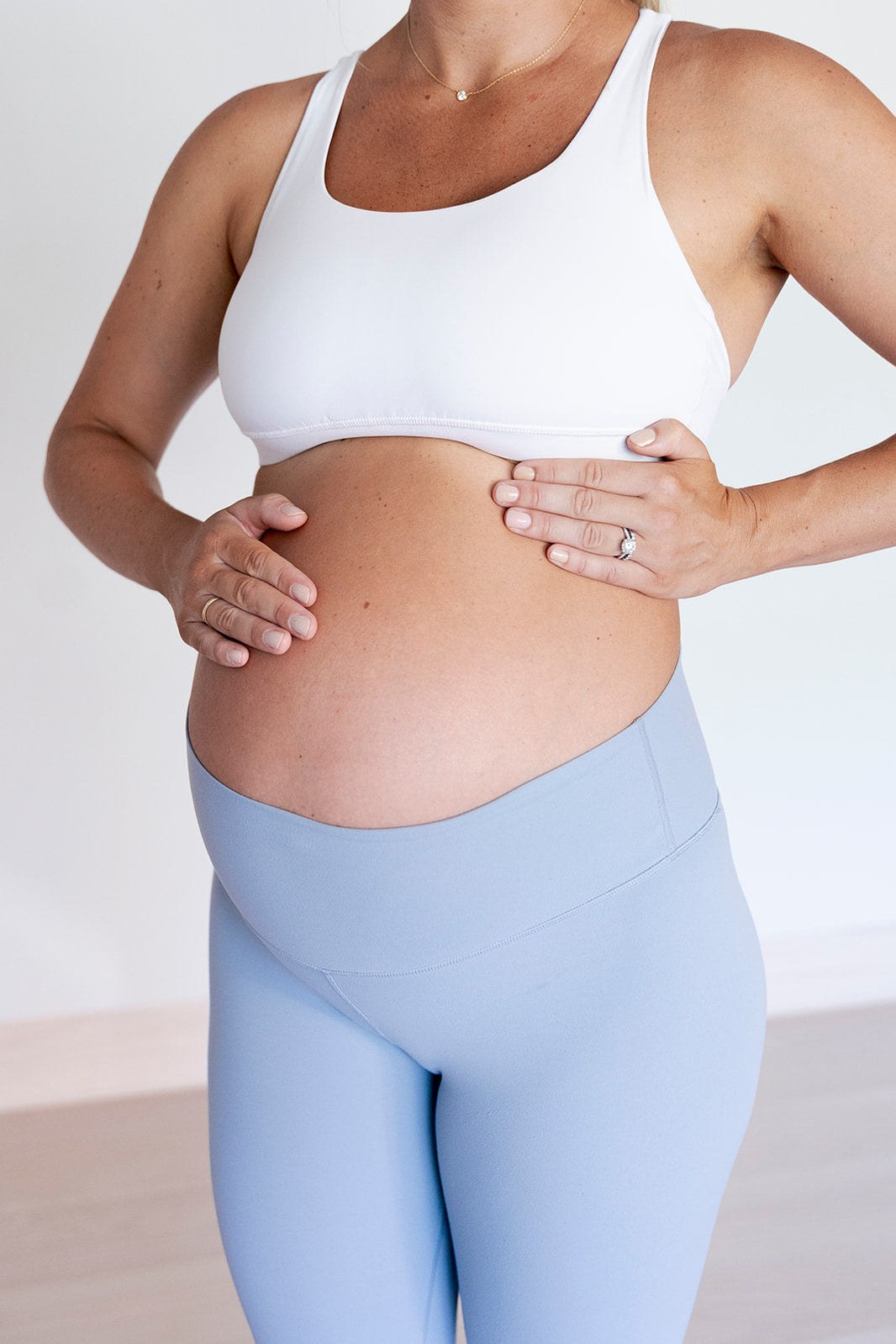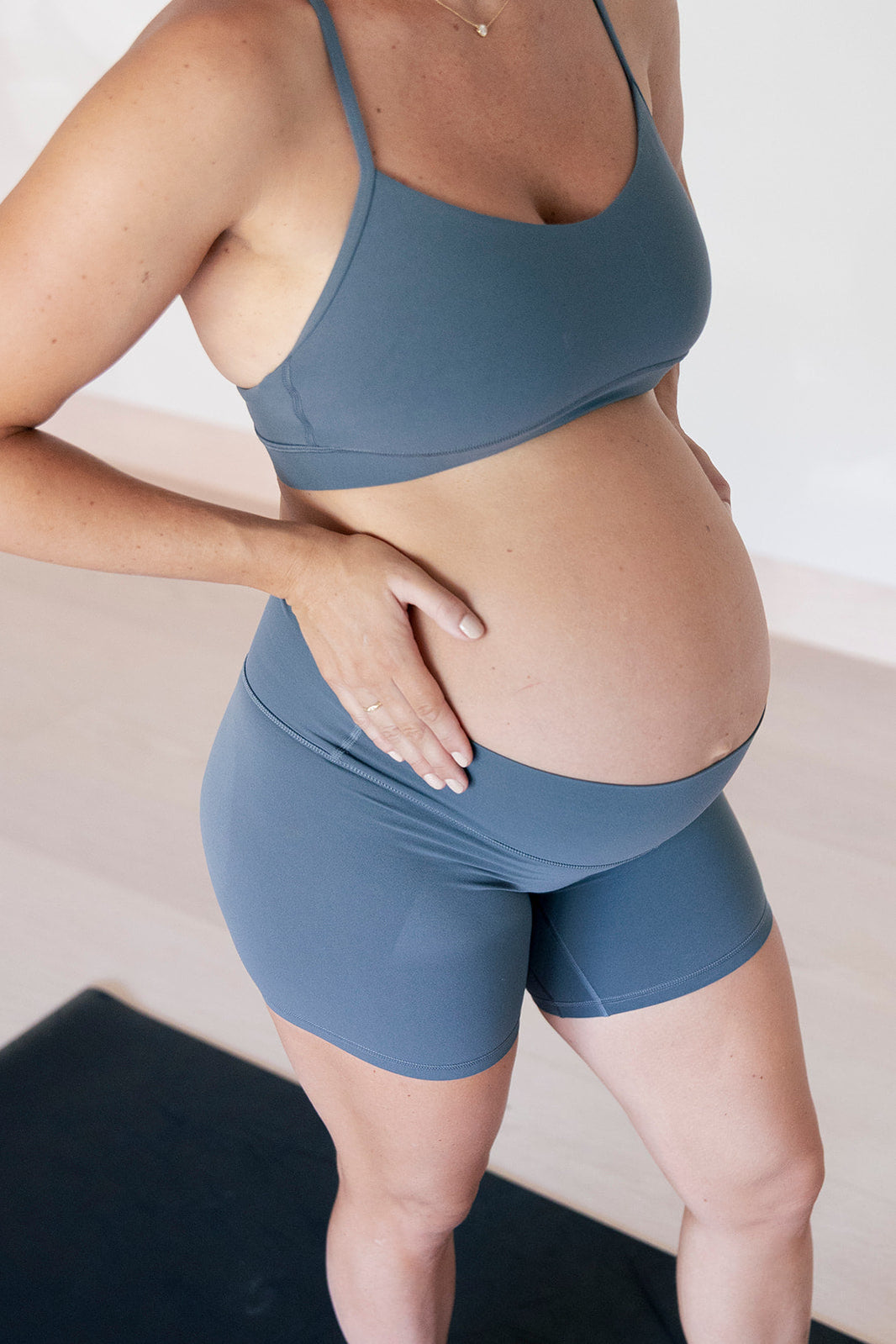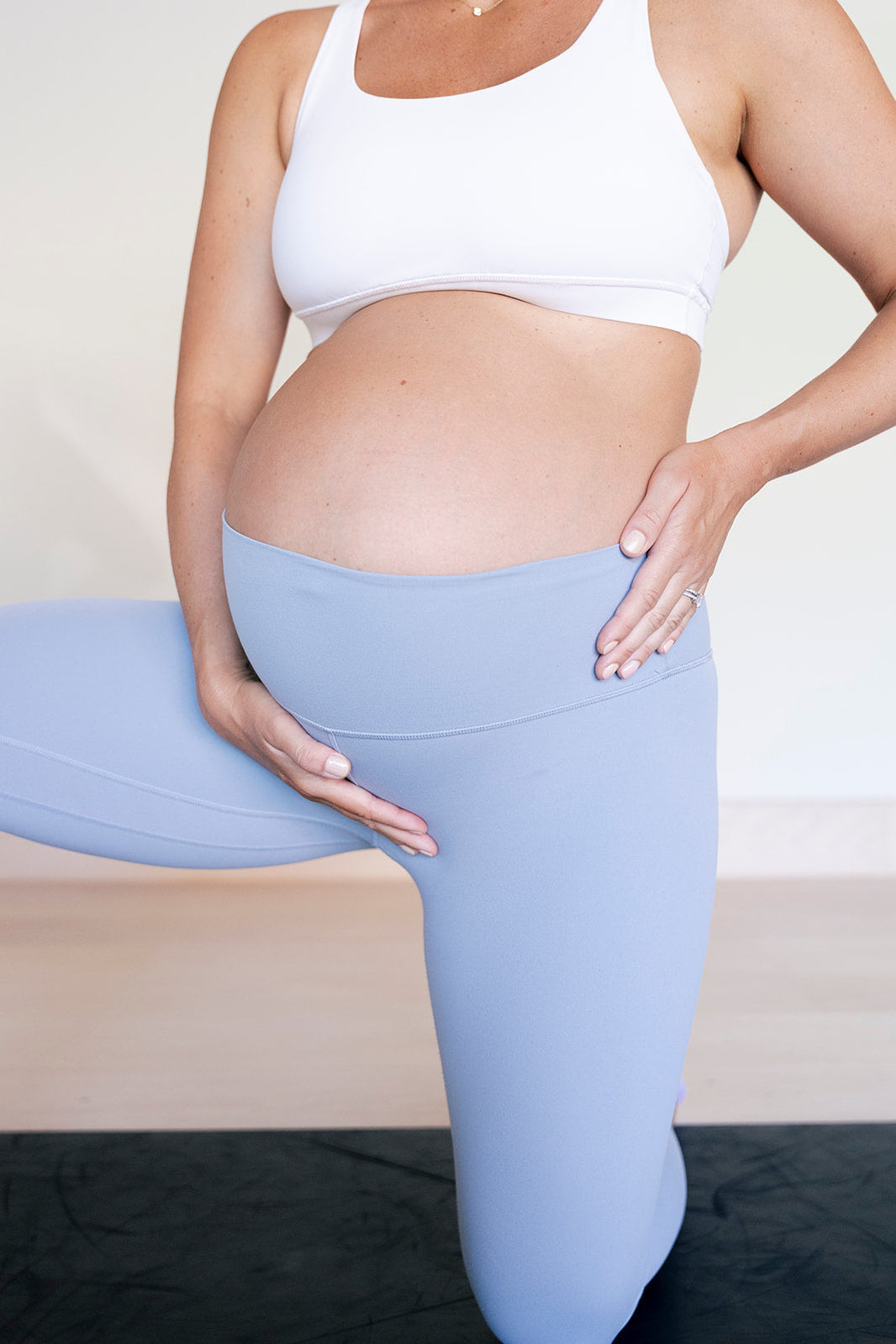Mama, if you’re feeling some rib cage pain during your pregnancy, know that you’re not alone. It’s a common discomfort for many expecting moms, especially as your baby grows and your body adjusts to the incredible changes happening inside. Let’s dive into what’s causing that pain, what’s happening in your body, and what you can do to help relieve it.
What’s Happening in Your Rib Cage During Pregnancy?
During pregnancy, your rib cage undergoes some amazing transformations. To make room for your growing baby, your ribs start to flare upward and outward. This change creates more space for your internal organs, which are being gently pushed upward by your expanding uterus. While this adaptation is essential for your baby’s development, it can also lead to discomfort or pain in the rib cage and the muscles and joints that connect into our rib cage.
Most mommas feel rib cage pain in the bottom portion of their ribs where the diaphragm connects, upper ribs, especially near the front where the sternum is located, or in the back near the shoulder blades. The prevalence of rib cage pain varies, but it’s common enough that you’re far from alone in this experience.
Let’s talk about why this happens:
Muscle Connections:
Your diaphragm is a major muscle for breathing, and it connects to the bottom of your rib cage. As your pregnancy progresses, your diaphragm has less space to move, which can affect your breathing and cause tension around the rib cage.
Your deep core muscles and obliques also attach to the rib cage. As your baby grows, these muscles may struggle to provide the same level of stability for your body, leading to strain or discomfort.
Your rectus abdominis (the "six-pack" muscles) attaches to the sternum. As these muscles stretch to accommodate your baby, they can become overactive or strained at the upper portion of them due to the stretch and expansion at the bottom portion of them, contributing to rib cage pain
Postural Changes:
Pregnancy often brings a more rounded shoulder posture and increased curvature in the upper back (kyphosis). This posture puts strain on the muscles and joints in your upper back, shoulders, and rib cage.
Tight pectoral muscles and latissimus doors muscles and tension in the muscles around your shoulder blades can pull on your rib cage and cause discomfort.
Pressure from Internal Organs:
As your uterus grows, it pushes upward on your internal organs, which can press on your rib cage from the inside. This pressure can add to the discomfort, especially in the later stages of pregnancy.
What Can You Do to Help Rib Cage Pain?
Now that you understand what’s causing your rib cage pain, let’s focus on what you can do to feel better. These tips and exercises are designed to relieve tension, improve mobility, and strengthen key areas to help you feel more comfortable.
Breath Work
Focusing on your breath can help improve rib cage mobility and reduce tension in the diaphragm and abdominal muscles.
Prayer Stretch with Rib Cage Expansion:
Kneel on the floor with your elbows resting on a couch or chair in front of you, and interlace your fingers behind your neck. Gently drop your chest toward the ground to feel a stretch under your armpits. Take slow, deep breaths, focusing on expanding your rib cage out to the sides as you inhale. Exhale and let the air passively leave your lungs. Hold this position for 1 minute or 10 slow breaths.
Seated Rib Cage Expansion:
Sit comfortably with a light resistance band wrapped around the bottom of your rib cage. Apply minimal tension to the band and inhale deeply, feeling your rib cage expand in all directions outward into the band: front to back, left to right, and circumferentially. Use the band more as a cue of where to expand your rib cage into as you inhale. Exhale and allow your rib cage to relax. Focus on breathing into any areas where you feel tightness. Practice for 10 slow breaths or about 2 minutes.
Postural Correction Exercises
Improving your posture can help reduce strain on your rib cage, upper back which connects into the rib cage, and scapulothoracic joints that also connect into the rib cage.
Doorway Pec Stretch:
Stand in a doorway with your elbows and forearms resting on the doorframe at shoulder height. Step one foot forward and gently press your chest through the doorway until you feel a stretch in your chest muscles. Hold for 30-60 seconds and repeat a couple of times per day.
Banded Pull-Aparts:
Hold a resistance band in both hands with your palms facing up and thumbs pointing backward. Keep your elbows straight and pull the band apart, squeezing your shoulder blades together. Hold the squeeze for 5 seconds, then slowly release. Repeat 10 times.
Thoracic Mobility Exercises
Keeping your upper back (thoracic spine) mobile can help alleviate rib cage pain and reduce strain on your upper back joints and muscles which also connect into your rib cae.
Thoracic Extensions:
Lie on your back with your knees bent and feet flat on the ground. Place a foam roller under your upper back, at shoulder blade level. Interlace your fingers behind your head to support your neck. Gently extend your upper back over the foam roller, holding the position for 3-5 seconds. Return to the starting position and repeat 15-20 times.
Thoracic Rainbows:
Kneel with one leg forward, and position your hip and knee against a wall. Interlace your fingers behind your neck with elbows pointing forward. Rotate your upper body, tracing an arc with your elbow closest to the wall. Inhale as you reach upward and exhale as you return to the starting position. Repeat 15-20 times on each side.
Hands-On Rib Cage Release
Using gentle massage techniques can help release tension around the rib cage.Apply your favorite moisturizer to your hands.Find your sternum (chest bone) and glide your hands with moderate pressure outward and underneath your rib cage in slow, sweeping motions. If you find a tender spot, hold gentle pressure there and breathe into it, or glide slowly over the area.Spend 2-3 minutes on each side in a supported reclining position.
Other Tips to Reduce Rib Cage Pain
Choose Comfortable Bras: Opt for bras with support that doesn’t cross above the shoulder blades to avoid extra strain on your rib cage. Avoid tight bands around your rib cage that can increase tension. Choose bras that cross at your shoulder blade level or even below it, keep the bra bands looser with less restrictions around the bottom portion of the rib cage.
Supportive Seating: Use chairs with good lumbar support to maintain a neutral spine and avoid increased pressure on your upper back.
Adjust Your Purse: If you’re carrying a cross-body purse, switch sides regularly. Avoid off-the-shoulder bags when possible.
Rib cage pain during pregnancy is common, but there’s a lot you can do to find relief. By focusing on breath work, improving your posture, increasing thoracic mobility, and using hands-on techniques, you can reduce discomfort and feel more at ease as your body changes. Don’t forget to choose supportive clothing and seating to minimize strain on your rib cage.
Remember, your body is doing something amazing—you’re growing a human! While rib cage pain can be frustrating, it’s just a small part of this incredible journey You’ve got this, and you’re never alone in this journey!




